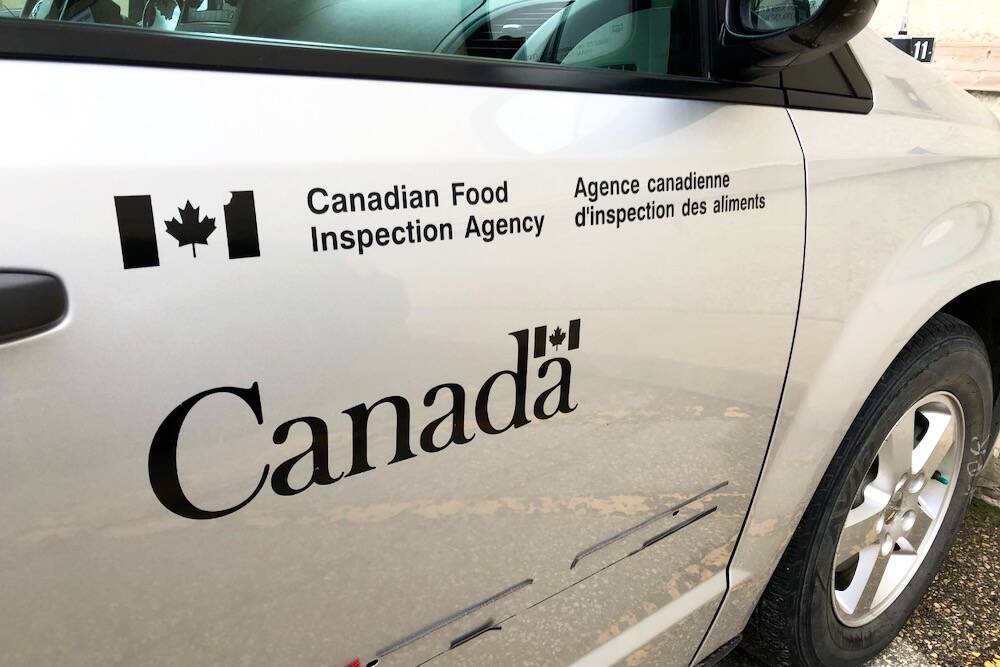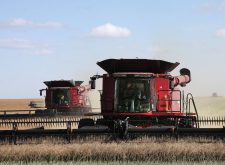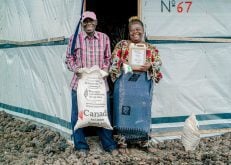Manitoba farmers will likely reseed more than 900,000 acres of canola this spring, but previous reseeding events demonstrate that solid yields are still possible, says the provincial oilseed specialist.
On May 30 a hard, dry frost hit a large geography and hundreds of farms across Manitoba.
David Van Deynze, manager of claim services for Manitoba Agricultural Services Corporation, the provincial crop insurer, said they’ve received 2,745 reseed claims as of June 5.
Manitoba farmers filed most of those claims in the first week of June.
“We’ve got about 1,900 of those since the frost (May 30),” Van Deynze said.
Read Also

B.C. ostriches culled, CFIA confirms
Ostriches on an embattled Edgewood, B.C. farm have been culled after a prolonged legal battle, the Canadian Food Inspection Agency has confirmed.
Looking at all insurance claims this spring, which includes previous frost damage on the May long weekend, MASC has had nearly a million acres of reseed claims this spring.
“As of this morning (June 5) it looks like about 950,000 acres… that’s all crops,” Van Deynze said from his office in Portage la Prairie. “Ninety percent or higher is canola acres, from the data we have.”
Van Deynze said reseeding claims in 2015 will be “very significant.”
“This is shaping up to being on of our bigger reseed years, for sure.”
Roberta Galbraith, who farms near Minnedosa, Man., had to reseed all of her canola acres this week.
“I don’t recall one (a frost) as long and hard as this,” she said. “We had rows of green crop that was up. On Saturday (May 30) morning at 5:30 it was – 7 C down in valley and – 3 C at the top of the valley. That canola was smoked.”
Dozens of farmers, across a wide geography in Manitoba, have similar stories of ‘smoked’ canola.
Van Deynze said many reseed claims are coming from Western Manitoba, but also the southern region.
“If you take Manitoba it’s almost an L shape, down the west side and (across) the south side,” he said.
“Lake Manitoba kind of buffered things a bit (near the lake)…. And east of the Red River, not a lot of issues there either.”
A number of reports suggested there was a canola seed shortage in Manitoba, as producers struggled to find replacement seed.
Anastasia Kubinec, Manitoba Agriculture oilseed specialist, said most growers are finding seed but it hasn’t been easy.
“They are driving around a little bit further than they would have normally to get their seed,” she said. “Maybe their local co-op didn’t have it. So they had to go to a co-op in Winnipeg.”
Galbraith said they called their local seed dealer immediately after the frost.
“We were very fortunate in that we got our order in early. Certainly there were some logistical issues of getting seed in retails and in a timely manner,” she said. “I haven’t heard of anybody (in the Minnedosa area) who can’t get seed. Some may have been delayed…. Retailers are going above and beyond to try and source that seed for growers.”
Kubinec said growers who lost flax in the May 30 frost are having more troubles than canola producers.
In fact, many are reseeding a crop other than flax because no flaxseed is available.
“The certified flax grown in Western Canada has been reduced over the past few years. We were tight on supply going into the spring,” she said.
“Even the commercial flax, there was good price (this spring) so guys a lot of guys sold their commercial flax.”
Kubinec said a few growers have inquired about reseeding with camelina, a short season oilseed, but she doesn’t know if they followed through with those plans.
A spring frost and extensive reseeding is unusual for Manitoba but not unprecedented.
Kubinec said a June 6 frost in 2009 damaged fragile canola in many Manitoba fields.
She said farmers were able to reseed and the crop turned out fine.
“The canola looked terrible going into the middle of June, but it flowered… for about six weeks and it branched out and had piles of secondary branches,” Kubinec said. “And we had an absolutely beautiful crop.”
However, the weather in 2009 was ideal for canola, as it was a long and cool growing season.
This year Kubinec is advising canola growers, who are unsure about reseeding a frost damaged crop, to have a second or third look at their fields.
“I’ve been getting a lot of pictures (of brown canola plants) from farmers. The leaves are dead but the growing point is just starting to come back and they have that new leaf,” she said. “Instead of a totally wiped out crop they probably do have that (necessary) four or five plants per sq. foot.”
Van Deynze said the May 30 frost has been a logistical headache for many growers, but a spring frost is preferable to a fall frost.
“An early frost in the fall (would) probably cost us more money than this reseed situation,” he said.
“Hopefully this crop will mature into harvest and all should be good.”
June 10 is the canola seeding deadline in Manitoba, for full insurance coverage.
Robert.arnason@producer.com















